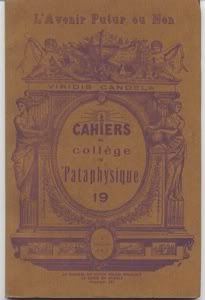The Hindu cosmology considers time as endless and cyclic of nature, and divided into 5 ages:
Satya Yuga, The Golden Age of perfect Bliss (4800 divine years): Satya means "Truth"; also called Krta or "action".
Treta Yuga, The Silver Age of lesser Virtue (3600 divine years): Treta means "Three", the age in which the feelings and forces of good are as three parts, and those of evil as one.
Dwapara Yuga, The Bronze Age of Virtue and Vice (2400 divine years): Dwapara means "Two-sided", or the eon of doubt.
and the present Kali Yuga, the Iron Age of increasing Evil (1200 divine years).
Each and every divine year lasts for 360 earthly years, hence the present eon should last for 432.000 years. It shall be followed by total annihilation; and the, the primordial timeless ocean for a period equal to the whole length of the 4 previous ages. And of course, Kali is the Indian version of Eris, meaning "Discord". "As the teachings tell, Kali, the creator-destroyer Goddess, will appear at the end of Kali Yuga to sweep away the wasted detritus of a spirit-dead humanity".
And then it all starts again.
From
Wikipedia:
"The life span of Lord Brahma, the creator, is 100 'Brahma-Years'. One day in the life of Brahma is called a Kalpa or 4.32 billion years (the approximate life span of the earth).(...)Every Kalpa (one day in the life of Brahma), Brahma creates 14 Manus one after the other, who in turn manifest and regulate this world.
Each Manu’s life (Manvantara) consists of 71 Chaturyugas (quartets of Yugas or eras).Each Chaturyuga is composed of four eras or Yugas: Satya, Treta, Dwapara and Kali. The cycle goes on for 100 'divine years' at the end of which Brahma perishes and is regenerated. Bramha's entire life equals 311 trillion, 40 billion years. Once Bramha dies there is an equal period of unmanifestation for 311 trillion, 40 billion years, until the next Bramha is created."
Oh and according to Hindu tradition, the current demiurge or Manu is said to be the seventh Manu and his name is Vaivasvat. The current Kali Yuga is only 5111 years old and started with the disappearance of Krishna (Lord Vishnu's last avatar).
We are currently believed to be in the 51st year of the present Brahmas life.
The cycle goes on forever.
Some scholars consider Brahma as the galactic center, starting from René Guénon to
Yukteswar.
Lord Brahma is considered the creator, but as in kaballah the term 'god' is just a human way of dealing with the ineffable. Above any god there is the supreme transcendence called Brahman.
Alan Watts:
"To the philosophers of India, however, Relativity is no new discovery, just as the concept of light years is no matter for astonishment to people used to thinking of time in millions of kalpas, ( A kalpa is about 4,320,000 years). The fact that the wise men of India have not been concerned with technological applications of this knowledge arises from the circumstance that technology is but one of innumerable ways of applying it."
From
Hindu Wisdom:
"One of the oldest writings in Vedic literature comes from a pseudo-historical god-man called Manu. René Guénon pointed out that Manu belongs to a family of related archetypal figures, which include Melchezidek, Metatron, St Michael, Gabriel, and Enoch. (...) his laws were recorded in the extremely ancient Vedic text called the Laws of Manu. (...) there is a section that deals with the ancient Vedic doctrine of World Ages - the Yugas. Manu indicates that a period of 24,000 years — clearly a reference to precession — consists of a series of four yugas or ages, each shorter and spiritually darker than the last. In one story this process of increasing limitation is envisioned as a cosmic cow standing with each leg in one quarter of the world; with each age that passes a leg is lost, resulting in the absurd and unstable world we live in today—a cow balancing on one leg."
I haven't been able to find an image yet depicting this bizarre allegory.






























